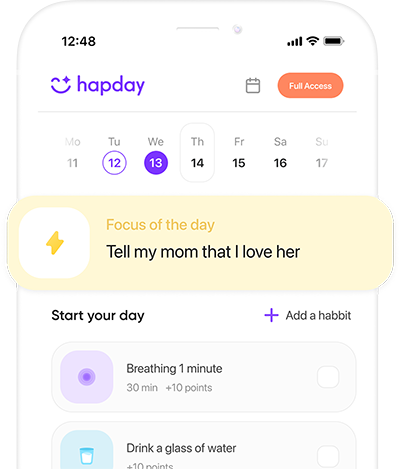Table of Contents
- Trying to Keep Up with Love Language Evolution
- Words of Affirmation
- Acts of Service
- Receiving Gifts
- Quality Time
- Physical Touch
- Shared Experiences
- Communication
- Using Love Languages for a Mental Boost
- Wrapping Things Up
Trying to Keep Up with Love Language Evolution
Believe it or not, old-school Dr. Chapman initially identified just five love languages: Words of Affirmation, Acts of Service, Receiving Gifts, Quality Time, and Physical Touch. But guess what? Our understanding of human interaction has deepened—thank goodness someone noticed—and extra love languages like Shared Experiences and Communication have made their grand entrance. These languages are central to forging connections that really make us feel good about life.
1. Words of Affirmation
Quickly Decoding Words of Affirmation
Words—what a powerhouse, right? For people whose primary love language is Words of Affirmation, hearing compliments, words of encouragement, and affirming statements makes a huge difference. Seriously, it’s all about sincere and specific communication that reinforces love and appreciation.
How Does it Help Mental Wellbeing?
Well, research keeps showing up with more good news. A study published in the Journal of Positive Psychology says that receiving positive affirmations significantly reduces stress levels. It even boosts self-esteem (Wood et al., 2009). I mean, for Gen Z and Millennial women juggling societal pressures and self-doubt on the daily, positive words can be a life-saver when it comes to building self-worth.
2. Acts of Service
Grasping Acts of Service
Okay, this one’s big on deeds over words. Acts of Service involve doing things to lighten another person’s load—whether it’s as simple as cleaning up or running errands. If this is your love language, actions speak way louder than words ever could.
A Mental Wellbeing Booster?
Turns out, rolling up your sleeves for someone can make you happier and less depressed. There’s a study in the journal Emotion pointing to how acts of kindness can skyrocket psychological flourishing (Nelson et al., 2016). So, if you’re someone who gives or gets these acts, you’ll likely feel more belonging and purpose.
3. Receiving Gifts
Decoding Receiving Gifts
Nope, it’s not just about stuff. The essence lies in the thoughtfulness and effort behind it. Gifts actually symbolize love and connection, right down to a simple souvenir from a trip.
Mental Wellbeing at Play
The art of gift-giving is all about reciprocity, strengthening social bonds and upping happiness levels—as the Journal of Consumer Psychology claimed way back in 2008 (Dunn et al., 2008). Young women who resonate with this language? They’ll get a nice confidence boost from receiving meaningful gifts that validate their relationships.
4. Quality Time
A Quick Peek at Quality Time
What’s more valuable than shared time? Quality Time means giving undivided attention and being present. Whether it’s diving into a deep conversation or just hanging out, it’s all about being together.
Impact on Mental Wellbeing
Guess what? Time well spent with loved ones reduces stress and ups life satisfaction. According to the American Psychological Association, social connections can seriously benefit mental health by offering emotional support and reducing that all-too-common loneliness (Holt-Lunstad et al., 2010). So, for those feeling isolated thanks to screens—yeah, I’m talking about you, Gen Z and Millennials—intentional quality time can be just the right cure.
5. Physical Touch
Understanding Physical Touch
This one’s all about non-verbal love—hugs, holding hands, or a shoulder pat. It’s a deeply primal way of showing affection, if you ask me.
Boosting Mental Wellbeing
Touch has ridiculously profound effects on emotional and physical health. Did you know anxiety can be reduced through touch? A study in Comprehensive Physiology pointed this out back in the early 2010s (Field, 2010). If you find comfort in this kind of connection, these gestures play a key role in regulating emotions and well-being. Who knew a hug could do so much?
6. Shared Experiences
Nailing Down Shared Experiences
Here’s a fun one—Shared Experiences as a love language highlights creating those all-important memories together. It embraces activities, events, and adventures you embark on to tighten bonds.
Mental Wellbeing Impact
Shared experiences are glue for relationships. Ever heard of a study in the Journal of Marriage and Family? They found that trying new things together can increase relationship satisfaction (Aron et al., 2000). Millennials and Gen Z, ever intrigued by adventures over material possessions, will find this love language quite fitting.
7. Communication
Getting Communication
Okay, of course, every relationship requires some talking! But for others, it’s the only way they express and grasp love. This involves open and honest dialogue—talk like you mean it—and seriously listening.
Mental Wellbeing Benefits
Good communication—that’s where emotional health truly shines. According the Journal of Social and Personal Relationships, strong communication links to better relationship satisfaction and happiness (Reis et al., 2013). In a whirlwind of social drama, prioritizing communication could just boost both personal and relational wellness.
Using Love Languages for a Mental Boost
Reflect
Kick things off with some self-reflection. What’s your main love language? Look at past experiences—what makes you feel most loved? This insight will shape how you nurture yourself and others.
Dialogues, Anyone?
Share your love language with family or friends. Encourage them to do the same, creating a new level of mutual understanding that could strengthen emotional ties.
Mindful Integration
Bring relevant practices into your routine. If you love Acts of Service, maybe volunteer more. Love Quality Time? Make space for that treasured time with your loved ones.
Love Languages and Mental Health
Have you noticed how love languages intertwine with mental health? Embracing your love language can help create an environment filled with support, resilience, and emotional wellness.
One memorable study in the Journal of Happiness Studies even showed that those who lean into their preferred love language enjoyed higher joy levels and less stress (Seligman, 2011). Clearly, love languages aren’t merely a fad—they’re powerful tools to enhance mental health and satisfaction!
Wrapping Things Up
Understanding the 7 love languages does more than improve relationships. It offers a pathway to enhance mental wellbeing. For Gen Z and Millennial women, who are facing unique hurdles in today’s whirlwind of a world, embracing these languages could mean stronger relationships and emotional health improvements.
By acknowledging and working with these love languages, you’re setting yourself up for deeper connections and, ultimately, a more rewarding life. Whether you express love through words, deeds, or shared moments, personal resonance can yield lasting positives on mental health.
Want to take it a step further? Discover how personalized coaching might support you by checking out Hapday.


